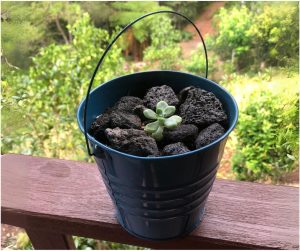I love making my own natural toothpaste. I know exactly what is in it. Many shop bought toothpastes contain nasty chemicals that we don’t want to be absorbing through our mouth, let alone accidentally swallowing. Chemicals such as:
Sodium Lauryl Sulfate (SLS) -This is what makes most toothpastes froth up and when people switch to natural toothpastes they can find the lack of froth a little weird at first. SLS is a known skin irritant.
Fluoride – This is a hotly contested ingredient as many dentists and Governments have lobbied for this to be included in drinking water as they believe it helps fight cavities. However there is just as many studies which say that the health risks of this ingredient far outweighs the benefits.
Triclosan – This substance is now banned in many countries across the world because it is known to be an endocrine disrupter (messes with hormones).
Propylene Glycol – This is also a skin irritant and the EWG suggests there is limited evidence of skin and immune system toxicity or allergies.
Artificial Colours and Flavours -The EWG suggests that some food dyes (FD&C Blue and Yellow) have known toxicity to humans. When it comes to artificial flavours we can never really be sure of their exact ingredients. According to the EWG there are 7397 studies in PubMed science library may include information on the toxicity of this chemical.
Artificial Sweeteners -Just like sugar, artificial sweeteners can lead to tooth decay along with other health concerns.
Natural Toothpaste Ingredients
Even some natural ingredients can be cause for concern including:
- Glycerin for example coats the teeth and can make remineralisation difficult.
- Hydrogen Peroxide which is used for whitening can cause irritation to the soft tissues inside your mouth.
- Straight bicarb soda is very abrasive on the teeth enamel and tastes salty which puts many people off.
What’s in my natural toothpaste?
Food Grade Diatomaceous Earth – is basically ground up fossils. It carries a negative charge which attracts positively charged ions. Therefore it is great for sweeping through and helping detox our bodies. It is 84% silica and contains 20 trace minerals.

You can also use Bentonite clay instead of the Diatomaceous Earth. Bentonite Clay when hydrated produces an electrical charge. It’s structure makes it perfect for absorbing toxins and other impurities. It also contains minerals that are beneficial for our bodies.
Bicarb Soda – alkaline and contains minerals. Abrasive and helps with stain removal.
MegaCal – Containing 207 mg of calcium and 188 mg of magnesium per serving, MegaCal is an excellent source of minerals to complement your lifestyle.
Stevia or Xylitol – as the bicarb soda can be a bit salty, these sweetness help to provide a much better taste.
Coconut oil – Have you read about the benefits of oil pulling using coconut oil? It is amazing what it can do for our oral hygiene. However you do have to spit the oil in a bin rather than down the skink as coconut oil hardens when it is cold. They same can be true for natural toothpastes if you spit them down the sink. So to avoid that issue I have added in some distilled water rather than just making the entire recipe from coconut oil. If the coconut oil becomes a problem in your sink and you don’t want to spit it in a bin, then substitute all of the coconut oil for distilled water. I use distilled water in all any beauty products rather than tap, filtered or boiled water as this is the only way I can guarantee no added little bugs in my beauty products.
Peppermint essential oil and Thieves essential oil blend – gives your toothpaste a great fresh after taste.

Natural Toothpaste DIY Recipe
Ingredients:
- 2 Tbs Diatomaceous earth
- 1 Tbs Bicarb soda
- 1 Tbs MegaCal
- 1-2 tsp stevia or xylitol
- 2 Tbs Coconut oil
- 1-2 Tbs Distilled water
- 4 drops Thieves essential oil blend
- 6 drops Peppermint essential oil
For extra minerals add 12 drops of Young Living’s Mineral Essence. Mineral Essence is a natural liquid mineral complex, containing full-spectrum ionic minerals that are the most efficiently absorbed form of minerals available.

Method:
- Combine all the ingredients in a glass or ceramic bowl.
- Stir with a wooden spoon.
- Store in a glass jar, silicon or plastic tube.
As always with natural products – if it smells off then it is off. There are no nasty preservatives in my products so they won’t last a super long time. So don’t make large quantities if you won’t use it all up in 6-12 months.
If you would like more great recipes for making your own body products then check out my FREE ebook “If I wouldn’t eat it then I won’t use it on my skin.” Its over on the FREE STUFF page.










 Subscribe to Hot Oily Mumma
Subscribe to Hot Oily Mumma